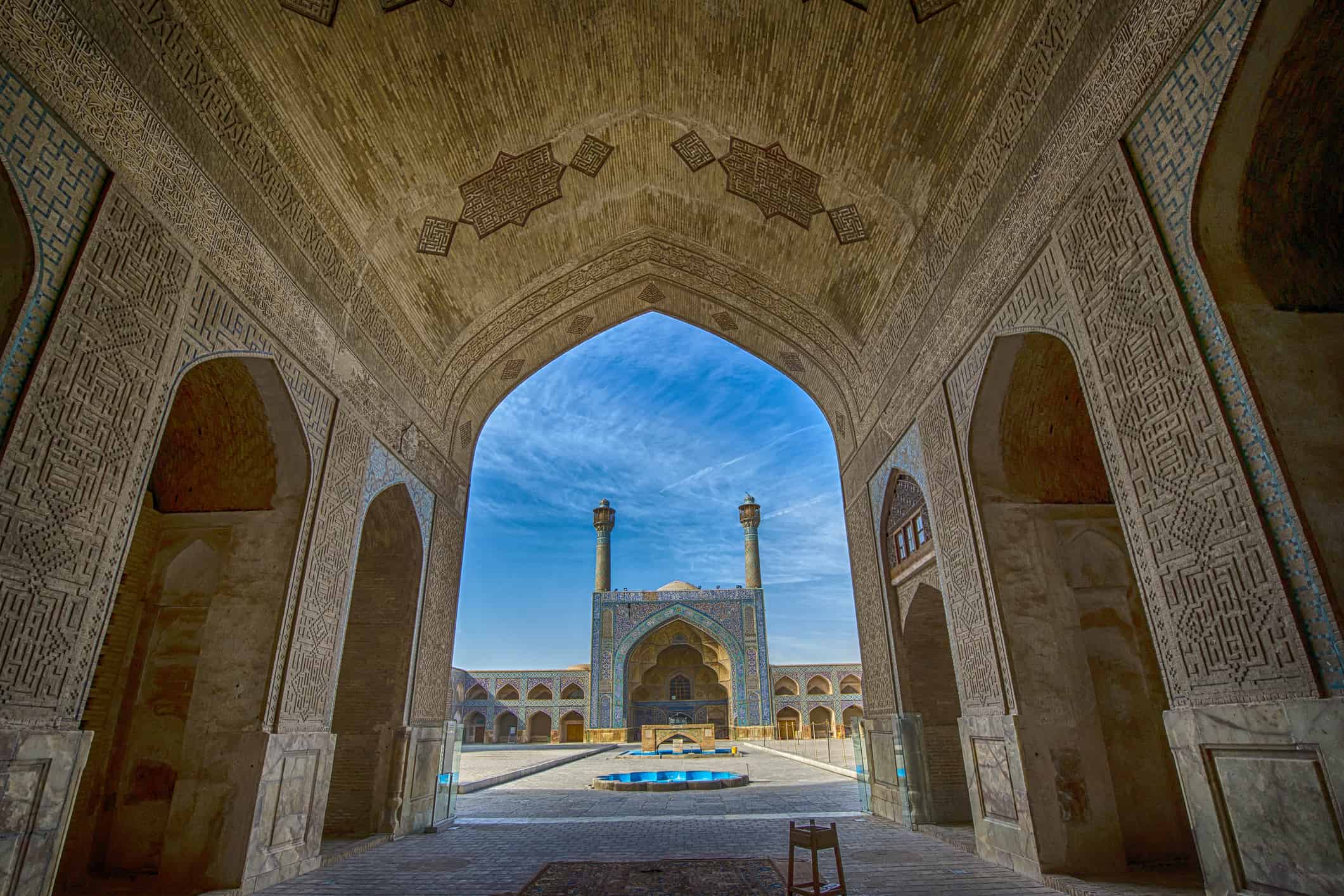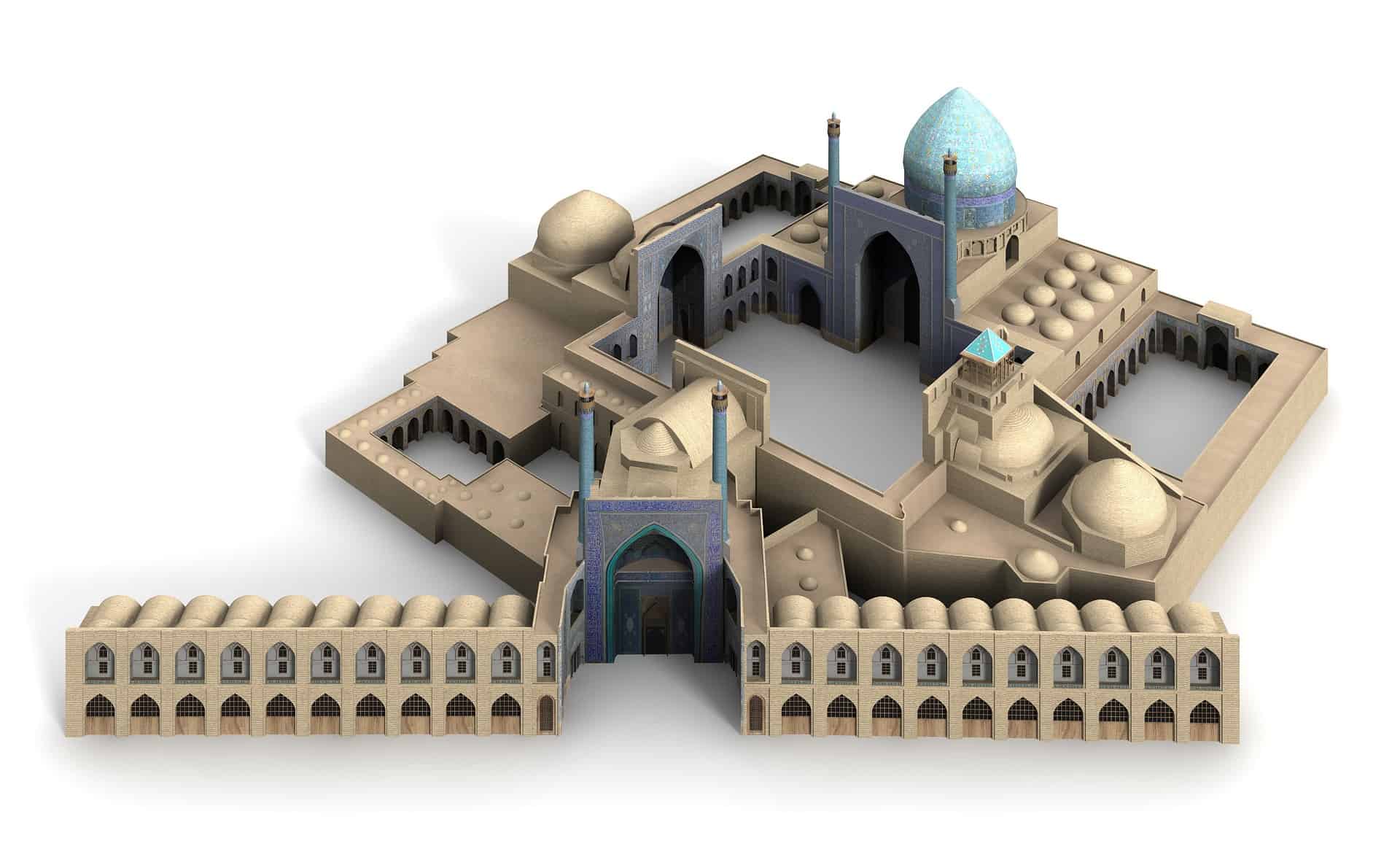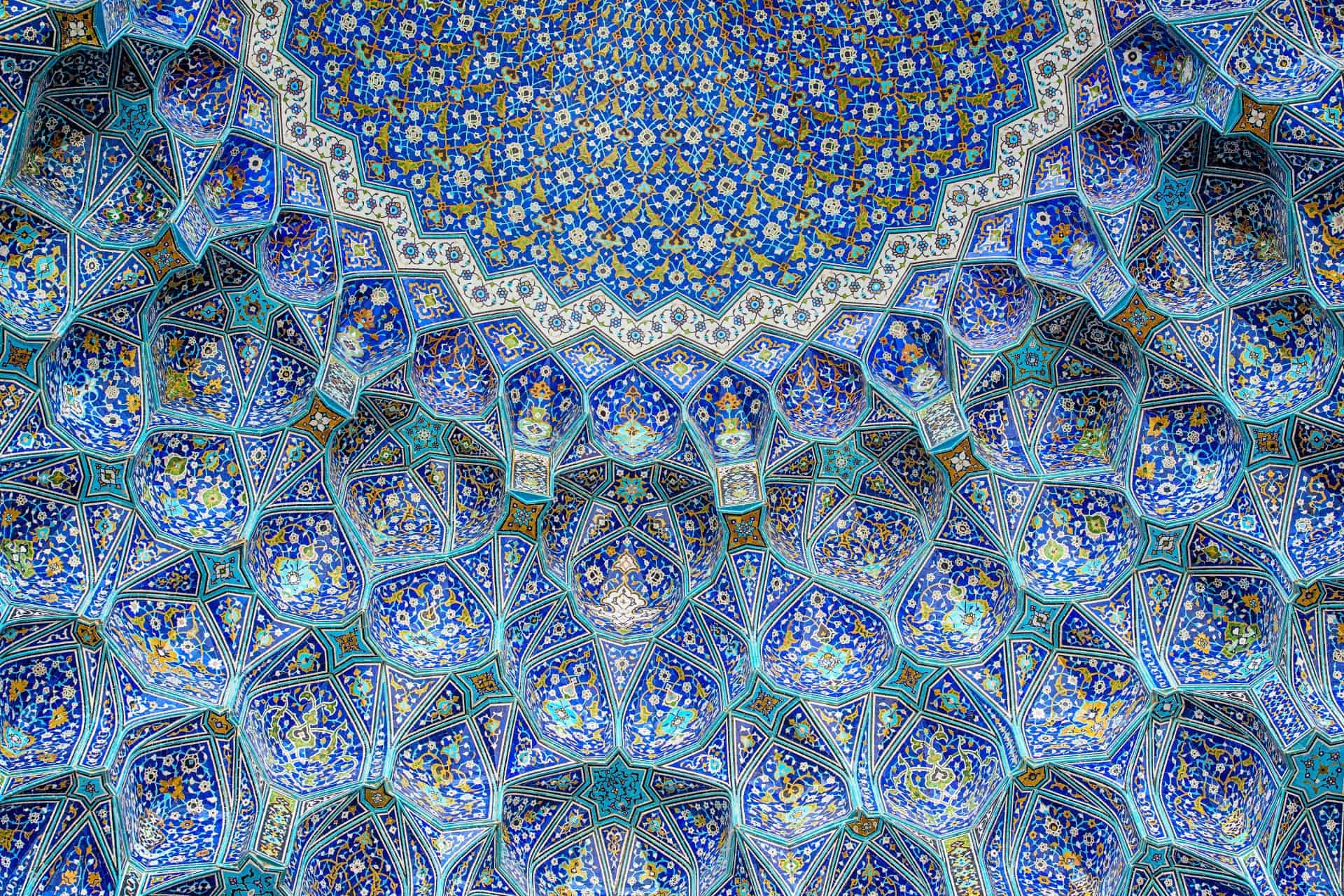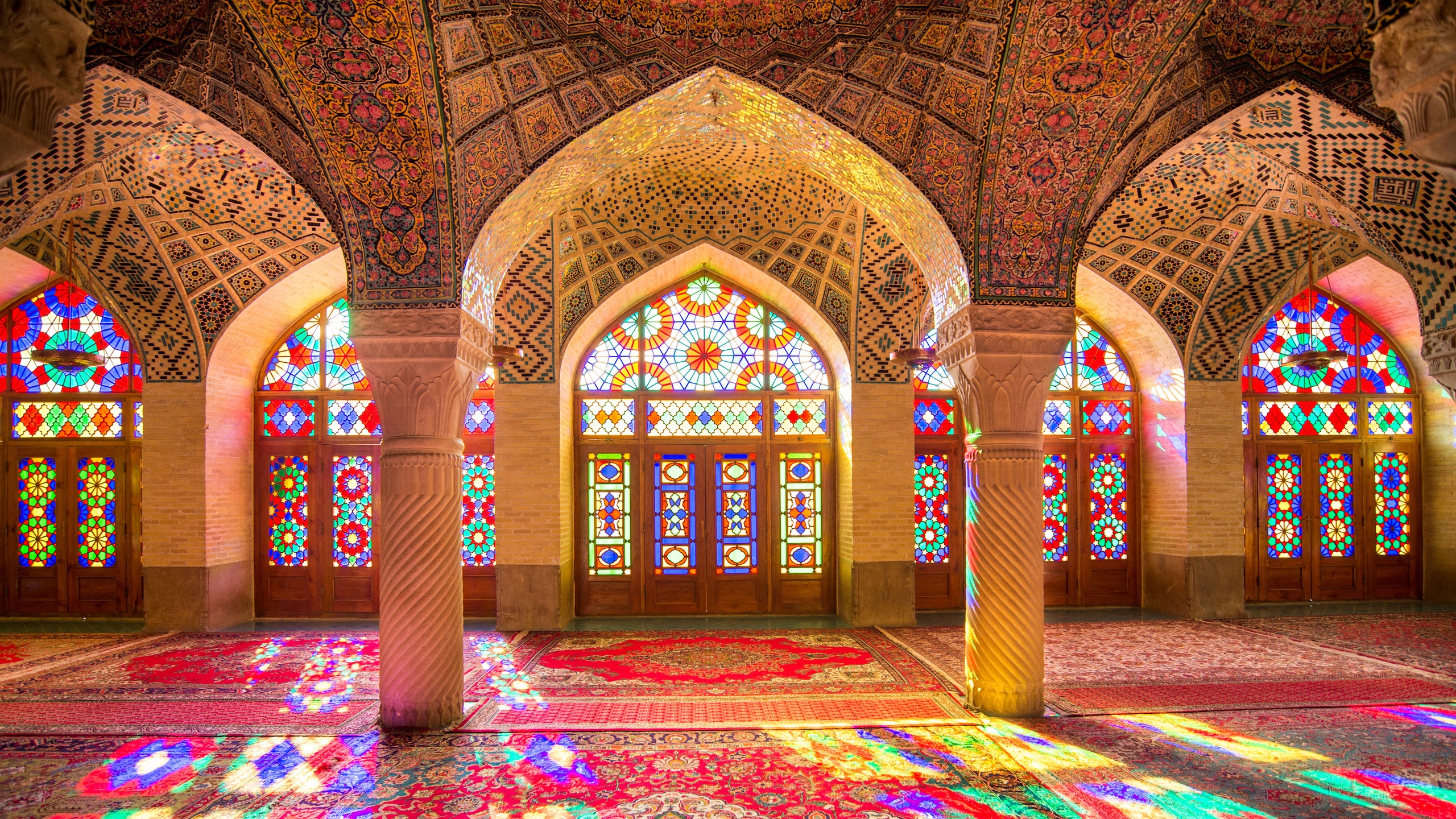Mosques
Mosque Architectural Elements
The word “mosque” derives from the Arabic word “masjid” (same word used in Persian, Urdu and Turkish) which means “a place of prostration”, referring to the salat, the daily ritual prayer where Muslims kneel and touch their foreheads to the ground as a sign of submission to Allah (God). “Islam” literally means “submission”.
At its most basic sense, “mosque” can refer to any house or open area of prayer in Islam, which at the barest minimum, as described by Renata Holod in Mosques: Splendors of Islam (Rizzoli International Publications, 2017), requires only three things for worship: an area with clear boundaries, a mat or carpet for ground cover, and orientation towards the holy city of Mecca, birthplace of the Prophet Muhammad (p. 14). However, the word “mosque” often brings to mind not this simple prayer space, but the ornately decorated monuments built by powerful Islamic rulers.

Masjed-e Imām (or Masjed-e shāh), Isfahan
The Shah Mosque ( مسجد شاه ) is a mosque located in Isfahan . It is located on the south side of Naghsh-e Jahan Square . It was built during the Safavid dynasty under the order of Shah Abbas I of Persia . It was also known as the Imam Mosque after the Iranian Revolution.

Nasir-ol-Molk Mosque, Shirāz
The Nasir al-Mulk Mosque ( مسجد نصیر الملک Masjed-e Nasir ol-Molk), also known as the Pink Mosque (مسجد صورتی Masjed-e Surati), is a traditional mosque in Shiraz. It is located in Gawd-i Arabān quarter, near Shāh Chérāgh Mosque. It was built during Qajar dynasty rule of Iran.
The mosque includes extensive coloured glass in its facade, and displays other traditional elements such as the Panj Kāse ("five concaved") design. It is named in popular culture as the 'Pink Mosque', due to the usage of a considerable number of pink-colored tiles for its interior design.


